-
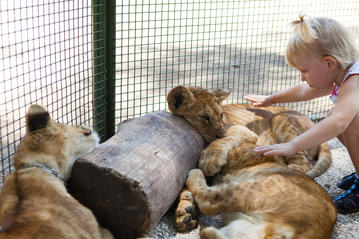 Lujan Zoo
Lujan Zoo This world-famous zoo located on the outskirts of Buenos Aires is sometimes referred to as the “extreme petting zoo.” That’s because Lujan Zoo breaks down barriers between humans and animals by getting them up close and extremely personal with some of the world’s wildest cats and biggest
Lujan Zoo
Lujan Zoo This world-famous zoo located on the outskirts of Buenos Aires is sometimes referred to as the “extreme petting zoo.” That’s because Lujan Zoo breaks down barriers between humans and animals by getting them up close and extremely personal with some of the world’s wildest cats and biggest
-
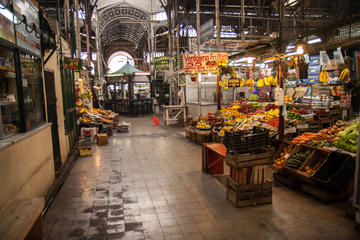 San Telmo Market
San Telmo Market Each Sunday morning, the historic San Telmo neighborhood of Buenos Aires plays host to the city’s most famous street fair, the San Telmo Market. Locally known as the Feria de San Telmo, the market brings hundreds of vendors to the streets surrounding Plaza Dorrego, most of them de
San Telmo Market
San Telmo Market Each Sunday morning, the historic San Telmo neighborhood of Buenos Aires plays host to the city’s most famous street fair, the San Telmo Market. Locally known as the Feria de San Telmo, the market brings hundreds of vendors to the streets surrounding Plaza Dorrego, most of them de
-
 Don Silvano Ranch
Don Silvano Ranch Don Silvano Ranch (Estancia Don Silvano in Spanish) sits on the pampas outside the Argentine capital. A day trip to this ranch gives visitors a glimpse into the history, heritage and traditions of Argentina’s cowboys, or gauchos, who worked as cattle herders and have become famou
Don Silvano Ranch
Don Silvano Ranch Don Silvano Ranch (Estancia Don Silvano in Spanish) sits on the pampas outside the Argentine capital. A day trip to this ranch gives visitors a glimpse into the history, heritage and traditions of Argentina’s cowboys, or gauchos, who worked as cattle herders and have become famou
-
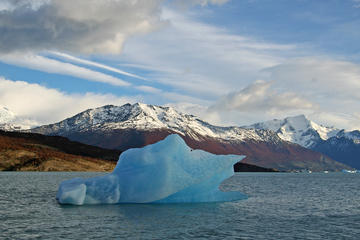 Onelli Glacier
Onelli Glacier Visits to the Onelli Glacier are usually part of a longer cruise of Lago Argentino that includes the Upsala and Spegazzini glaciers as well. The Onelli Glacier is currently receding, like all others in the area, other than Perito Moreno, and visitors witness the extraordinary glacie
Onelli Glacier
Onelli Glacier Visits to the Onelli Glacier are usually part of a longer cruise of Lago Argentino that includes the Upsala and Spegazzini glaciers as well. The Onelli Glacier is currently receding, like all others in the area, other than Perito Moreno, and visitors witness the extraordinary glacie
-
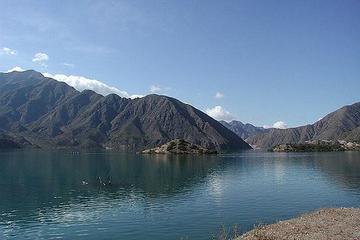 Potrerillos
Potrerillos Potrerillos is an artificial lake surrounded by snow-dotted mountains and cypress forests on Mendoza’s doorstep. A dammed waterway on the Mendoza River, the lake measures 12 km long, 3 km wide (7.5 miles long, 2 miles wide). Popular as a day-trip and weekend destination from Mendoza, i
Potrerillos
Potrerillos Potrerillos is an artificial lake surrounded by snow-dotted mountains and cypress forests on Mendoza’s doorstep. A dammed waterway on the Mendoza River, the lake measures 12 km long, 3 km wide (7.5 miles long, 2 miles wide). Popular as a day-trip and weekend destination from Mendoza, i
-
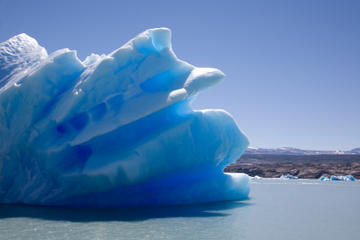 Upsala Glacier
Upsala Glacier The Upsala Glacier upstages even Perito Moreno in scale.South America’s largest glacier, Upsala measures 50km long and 10km wide (31 miles long, 6 miles wide). It’s only from the water of Lake Argentino that you can really appreciate the glacier’s magnitude and crystalline beauty.Fo
Upsala Glacier
Upsala Glacier The Upsala Glacier upstages even Perito Moreno in scale.South America’s largest glacier, Upsala measures 50km long and 10km wide (31 miles long, 6 miles wide). It’s only from the water of Lake Argentino that you can really appreciate the glacier’s magnitude and crystalline beauty.Fo
-
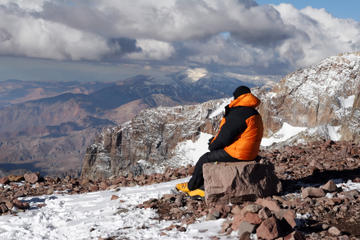 Andes Mountains
Andes Mountains The Andes Mountains, which form Argentina’s backbone, are to the far west of the country, and separate this nation from bordering Chile. They extend most of the length of South America (some 4,300 miles), stretching down from Venezuela through Colombia, Ecuador, Peru, Bolivia, Chil
Andes Mountains
Andes Mountains The Andes Mountains, which form Argentina’s backbone, are to the far west of the country, and separate this nation from bordering Chile. They extend most of the length of South America (some 4,300 miles), stretching down from Venezuela through Colombia, Ecuador, Peru, Bolivia, Chil
-
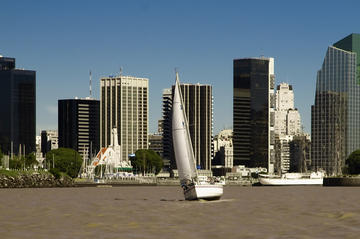 Rio de la Plata
Rio de la Plata Composing part of the border between Argentina and Uruguay, this 180-mile-long estuary is formed by the confluence of the Uruguay River and the Paraná River. Though used for centuries by native tribes, the river wasn’t explored by Europeans until the 16th-century Spanish navigator
Rio de la Plata
Rio de la Plata Composing part of the border between Argentina and Uruguay, this 180-mile-long estuary is formed by the confluence of the Uruguay River and the Paraná River. Though used for centuries by native tribes, the river wasn’t explored by Europeans until the 16th-century Spanish navigator
-
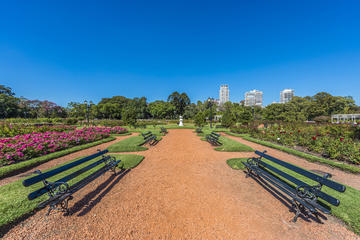 Parque Tres de Febrero
Parque Tres de Febrero Most people come to Palermo to enjoy the urban sights that Buenos Aires has to offer. There are several different sections, from mainstream to bohemian and from fashion and design to residential. And then there is Parque Tres de Febrero. This nearly 1,000-acre park is also r
Parque Tres de Febrero
Parque Tres de Febrero Most people come to Palermo to enjoy the urban sights that Buenos Aires has to offer. There are several different sections, from mainstream to bohemian and from fashion and design to residential. And then there is Parque Tres de Febrero. This nearly 1,000-acre park is also r
-
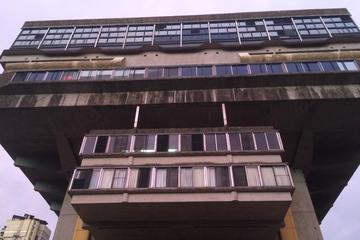 National Library
National Library Located in a quiet corner of Recoleta, the Argentine National Library is the largest library in the country and one of the most important in South America. In a city like Buenos Aires, famous for its belle epoch architecture, the National Library stands out as one of the best exam
National Library
National Library Located in a quiet corner of Recoleta, the Argentine National Library is the largest library in the country and one of the most important in South America. In a city like Buenos Aires, famous for its belle epoch architecture, the National Library stands out as one of the best exam
-
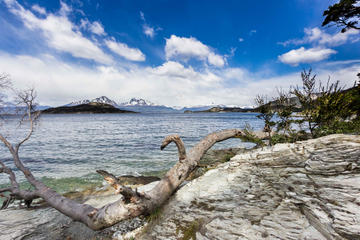 Lago Roca
Lago Roca Completely surrounded by the Guanaco and Piramides Mountain Ranges, both sub ranges of the Andes, Lago Roca is a stunning emerald-green lake protected by Argentina’s Tierra Del Fuego National Park.The Lago Roca hostel and campground is the easiest starting point to explore this section o
Lago Roca
Lago Roca Completely surrounded by the Guanaco and Piramides Mountain Ranges, both sub ranges of the Andes, Lago Roca is a stunning emerald-green lake protected by Argentina’s Tierra Del Fuego National Park.The Lago Roca hostel and campground is the easiest starting point to explore this section o
-
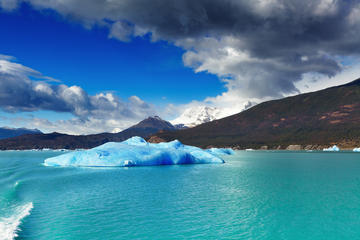 Lago Argentino
Lago Argentino If you’re visiting El Calafate, there’s no way to miss the vast Lago Argentino. The city sits on the shore of this massive lake, the largest freshwater source in Argentina. It covers 566 square miles and is a result of glacial meltwater, which causes its milky blue color. The lake i
Lago Argentino
Lago Argentino If you’re visiting El Calafate, there’s no way to miss the vast Lago Argentino. The city sits on the shore of this massive lake, the largest freshwater source in Argentina. It covers 566 square miles and is a result of glacial meltwater, which causes its milky blue color. The lake i
-
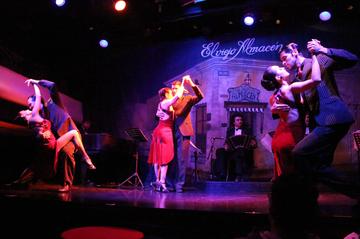 El Viejo Almacen
El Viejo Almacen One of Buenos Aires’ biggest draws for visitors is the chance to see a live tango show. And while there are tango performances on the street (for example, on El Caminito), or even in San Telmo, it would be difficult to beat the all-encompassing experience of going to a tango show.
El Viejo Almacen
El Viejo Almacen One of Buenos Aires’ biggest draws for visitors is the chance to see a live tango show. And while there are tango performances on the street (for example, on El Caminito), or even in San Telmo, it would be difficult to beat the all-encompassing experience of going to a tango show.
-
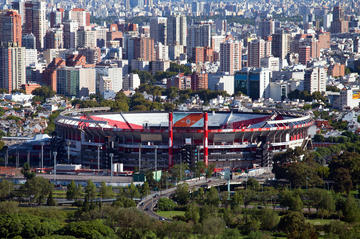 El Monumental Stadium
El Monumental Stadium Few activities whip Argentines into a frenzy like a nail-biting futbol (soccer) match and watching local team River Plate – one of the country’s top teams - playing at their home stadium. El Monumental is a popular pastime for locals and tourists alike. Built in 1937 in the B
El Monumental Stadium
El Monumental Stadium Few activities whip Argentines into a frenzy like a nail-biting futbol (soccer) match and watching local team River Plate – one of the country’s top teams - playing at their home stadium. El Monumental is a popular pastime for locals and tourists alike. Built in 1937 in the B
-
 El Bolson
El Bolson El Bolsón is a town in the southwest section of the Rio Negro province of Argentina. Despite its southern location, it has an unusually mild climate due to the valleys towards Chile and the Pacific Ocean. The town was originally settled by German immigrants, and in the 1970s, hippies fro
El Bolson
El Bolson El Bolsón is a town in the southwest section of the Rio Negro province of Argentina. Despite its southern location, it has an unusually mild climate due to the valleys towards Chile and the Pacific Ocean. The town was originally settled by German immigrants, and in the 1970s, hippies fro
-
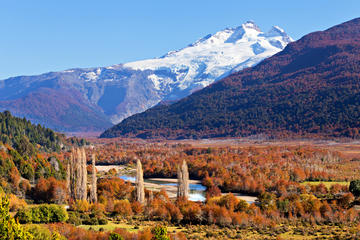 Cerro Tronador
Cerro Tronador Cerro Tronador is the standout attraction among many day-trip and hiking options in Bariloche. It is named for the thunderous sound the volcano made before it went extinct, but the name (Thundering Mountain) is still apt, for the rumbling icefalls as giant pieces of ice shed from th
Cerro Tronador
Cerro Tronador Cerro Tronador is the standout attraction among many day-trip and hiking options in Bariloche. It is named for the thunderous sound the volcano made before it went extinct, but the name (Thundering Mountain) is still apt, for the rumbling icefalls as giant pieces of ice shed from th
-
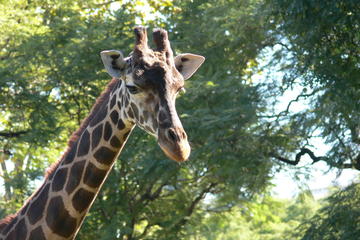 Buenos Aires Zoo
Buenos Aires Zoo With over 350 different animal species and an acclaimed exotic breeding program, Buenos Aires Zoo is the go-to place for urban wildlife spotting, hitting headlines at the start of 2013 when one of its Bengal White Tigers produced a rare litter of four cubs. Located close to Plaza
Buenos Aires Zoo
Buenos Aires Zoo With over 350 different animal species and an acclaimed exotic breeding program, Buenos Aires Zoo is the go-to place for urban wildlife spotting, hitting headlines at the start of 2013 when one of its Bengal White Tigers produced a rare litter of four cubs. Located close to Plaza
-
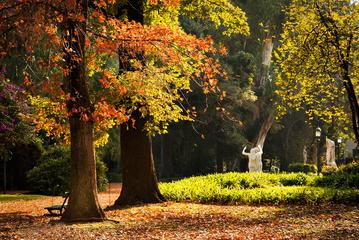 Buenos Aires Botanical Garden
Buenos Aires Botanical Garden Located in the heart of the Palermo neighborhood, the Buenos Aires Botanical Garden opened in 1898 based on a design by French architect Carlos Thays. Today the national monument encompasses 18 acres (7 hectares) of gardens showcasing some 5,500 species of plants from
Buenos Aires Botanical Garden
Buenos Aires Botanical Garden Located in the heart of the Palermo neighborhood, the Buenos Aires Botanical Garden opened in 1898 based on a design by French architect Carlos Thays. Today the national monument encompasses 18 acres (7 hectares) of gardens showcasing some 5,500 species of plants from
-
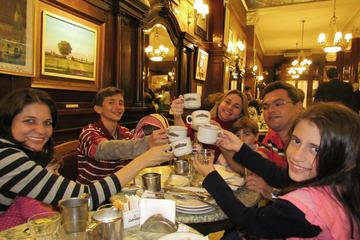 Cafe Tortoni
Cafe Tortoni Buenos Aires enjoys a vibrant cafe culture, but few of the city’s cafes are quite as iconic as Cafe Tortoni. Opened in 1858 by a French immigrant, the cafe soon became a popular haunt of tango singers and literati, most notably the founding members of La Peña. Many of their old photos
Cafe Tortoni
Cafe Tortoni Buenos Aires enjoys a vibrant cafe culture, but few of the city’s cafes are quite as iconic as Cafe Tortoni. Opened in 1858 by a French immigrant, the cafe soon became a popular haunt of tango singers and literati, most notably the founding members of La Peña. Many of their old photos
-
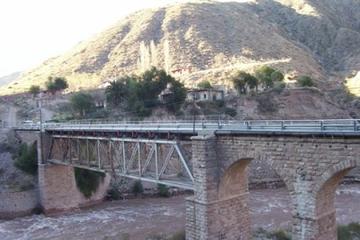 Cacheuta
Cacheuta Argentina’s hot-spring spa town of Cacheuta has been a popular Andean resort since the early 1900s. Hot springs are a feature of the Andean foothills, and Cacheuta is one of the country’s major spa resorts. The first resort opened in 1904, and became a byword for luxurious relaxation, wit
Cacheuta
Cacheuta Argentina’s hot-spring spa town of Cacheuta has been a popular Andean resort since the early 1900s. Hot springs are a feature of the Andean foothills, and Cacheuta is one of the country’s major spa resorts. The first resort opened in 1904, and became a byword for luxurious relaxation, wit
Total
823 -travel
FirstPage PreviousPage NextPage LastPage CurrentPage:
9/42 20-travel/Page GoTo Page:
 Lujan Zoo
Lujan Zoo This world-famous zoo located on the outskirts of Buenos Aires is sometimes referred to as the “extreme petting zoo.” That’s because Lujan Zoo breaks down barriers between humans and animals by getting them up close and extremely personal with some of the world’s wildest cats and biggest
Lujan Zoo
Lujan Zoo This world-famous zoo located on the outskirts of Buenos Aires is sometimes referred to as the “extreme petting zoo.” That’s because Lujan Zoo breaks down barriers between humans and animals by getting them up close and extremely personal with some of the world’s wildest cats and biggest
 San Telmo Market
San Telmo Market Each Sunday morning, the historic San Telmo neighborhood of Buenos Aires plays host to the city’s most famous street fair, the San Telmo Market. Locally known as the Feria de San Telmo, the market brings hundreds of vendors to the streets surrounding Plaza Dorrego, most of them de
San Telmo Market
San Telmo Market Each Sunday morning, the historic San Telmo neighborhood of Buenos Aires plays host to the city’s most famous street fair, the San Telmo Market. Locally known as the Feria de San Telmo, the market brings hundreds of vendors to the streets surrounding Plaza Dorrego, most of them de
 Don Silvano Ranch
Don Silvano Ranch Don Silvano Ranch (Estancia Don Silvano in Spanish) sits on the pampas outside the Argentine capital. A day trip to this ranch gives visitors a glimpse into the history, heritage and traditions of Argentina’s cowboys, or gauchos, who worked as cattle herders and have become famou
Don Silvano Ranch
Don Silvano Ranch Don Silvano Ranch (Estancia Don Silvano in Spanish) sits on the pampas outside the Argentine capital. A day trip to this ranch gives visitors a glimpse into the history, heritage and traditions of Argentina’s cowboys, or gauchos, who worked as cattle herders and have become famou
 Onelli Glacier
Onelli Glacier Visits to the Onelli Glacier are usually part of a longer cruise of Lago Argentino that includes the Upsala and Spegazzini glaciers as well. The Onelli Glacier is currently receding, like all others in the area, other than Perito Moreno, and visitors witness the extraordinary glacie
Onelli Glacier
Onelli Glacier Visits to the Onelli Glacier are usually part of a longer cruise of Lago Argentino that includes the Upsala and Spegazzini glaciers as well. The Onelli Glacier is currently receding, like all others in the area, other than Perito Moreno, and visitors witness the extraordinary glacie
 Potrerillos
Potrerillos Potrerillos is an artificial lake surrounded by snow-dotted mountains and cypress forests on Mendoza’s doorstep. A dammed waterway on the Mendoza River, the lake measures 12 km long, 3 km wide (7.5 miles long, 2 miles wide). Popular as a day-trip and weekend destination from Mendoza, i
Potrerillos
Potrerillos Potrerillos is an artificial lake surrounded by snow-dotted mountains and cypress forests on Mendoza’s doorstep. A dammed waterway on the Mendoza River, the lake measures 12 km long, 3 km wide (7.5 miles long, 2 miles wide). Popular as a day-trip and weekend destination from Mendoza, i
 Upsala Glacier
Upsala Glacier The Upsala Glacier upstages even Perito Moreno in scale.South America’s largest glacier, Upsala measures 50km long and 10km wide (31 miles long, 6 miles wide). It’s only from the water of Lake Argentino that you can really appreciate the glacier’s magnitude and crystalline beauty.Fo
Upsala Glacier
Upsala Glacier The Upsala Glacier upstages even Perito Moreno in scale.South America’s largest glacier, Upsala measures 50km long and 10km wide (31 miles long, 6 miles wide). It’s only from the water of Lake Argentino that you can really appreciate the glacier’s magnitude and crystalline beauty.Fo
 Andes Mountains
Andes Mountains The Andes Mountains, which form Argentina’s backbone, are to the far west of the country, and separate this nation from bordering Chile. They extend most of the length of South America (some 4,300 miles), stretching down from Venezuela through Colombia, Ecuador, Peru, Bolivia, Chil
Andes Mountains
Andes Mountains The Andes Mountains, which form Argentina’s backbone, are to the far west of the country, and separate this nation from bordering Chile. They extend most of the length of South America (some 4,300 miles), stretching down from Venezuela through Colombia, Ecuador, Peru, Bolivia, Chil
 Rio de la Plata
Rio de la Plata Composing part of the border between Argentina and Uruguay, this 180-mile-long estuary is formed by the confluence of the Uruguay River and the Paraná River. Though used for centuries by native tribes, the river wasn’t explored by Europeans until the 16th-century Spanish navigator
Rio de la Plata
Rio de la Plata Composing part of the border between Argentina and Uruguay, this 180-mile-long estuary is formed by the confluence of the Uruguay River and the Paraná River. Though used for centuries by native tribes, the river wasn’t explored by Europeans until the 16th-century Spanish navigator
 Parque Tres de Febrero
Parque Tres de Febrero Most people come to Palermo to enjoy the urban sights that Buenos Aires has to offer. There are several different sections, from mainstream to bohemian and from fashion and design to residential. And then there is Parque Tres de Febrero. This nearly 1,000-acre park is also r
Parque Tres de Febrero
Parque Tres de Febrero Most people come to Palermo to enjoy the urban sights that Buenos Aires has to offer. There are several different sections, from mainstream to bohemian and from fashion and design to residential. And then there is Parque Tres de Febrero. This nearly 1,000-acre park is also r
 National Library
National Library Located in a quiet corner of Recoleta, the Argentine National Library is the largest library in the country and one of the most important in South America. In a city like Buenos Aires, famous for its belle epoch architecture, the National Library stands out as one of the best exam
National Library
National Library Located in a quiet corner of Recoleta, the Argentine National Library is the largest library in the country and one of the most important in South America. In a city like Buenos Aires, famous for its belle epoch architecture, the National Library stands out as one of the best exam
 Lago Roca
Lago Roca Completely surrounded by the Guanaco and Piramides Mountain Ranges, both sub ranges of the Andes, Lago Roca is a stunning emerald-green lake protected by Argentina’s Tierra Del Fuego National Park.The Lago Roca hostel and campground is the easiest starting point to explore this section o
Lago Roca
Lago Roca Completely surrounded by the Guanaco and Piramides Mountain Ranges, both sub ranges of the Andes, Lago Roca is a stunning emerald-green lake protected by Argentina’s Tierra Del Fuego National Park.The Lago Roca hostel and campground is the easiest starting point to explore this section o
 Lago Argentino
Lago Argentino If you’re visiting El Calafate, there’s no way to miss the vast Lago Argentino. The city sits on the shore of this massive lake, the largest freshwater source in Argentina. It covers 566 square miles and is a result of glacial meltwater, which causes its milky blue color. The lake i
Lago Argentino
Lago Argentino If you’re visiting El Calafate, there’s no way to miss the vast Lago Argentino. The city sits on the shore of this massive lake, the largest freshwater source in Argentina. It covers 566 square miles and is a result of glacial meltwater, which causes its milky blue color. The lake i
 El Viejo Almacen
El Viejo Almacen One of Buenos Aires’ biggest draws for visitors is the chance to see a live tango show. And while there are tango performances on the street (for example, on El Caminito), or even in San Telmo, it would be difficult to beat the all-encompassing experience of going to a tango show.
El Viejo Almacen
El Viejo Almacen One of Buenos Aires’ biggest draws for visitors is the chance to see a live tango show. And while there are tango performances on the street (for example, on El Caminito), or even in San Telmo, it would be difficult to beat the all-encompassing experience of going to a tango show.
 El Monumental Stadium
El Monumental Stadium Few activities whip Argentines into a frenzy like a nail-biting futbol (soccer) match and watching local team River Plate – one of the country’s top teams - playing at their home stadium. El Monumental is a popular pastime for locals and tourists alike. Built in 1937 in the B
El Monumental Stadium
El Monumental Stadium Few activities whip Argentines into a frenzy like a nail-biting futbol (soccer) match and watching local team River Plate – one of the country’s top teams - playing at their home stadium. El Monumental is a popular pastime for locals and tourists alike. Built in 1937 in the B
 El Bolson
El Bolson El Bolsón is a town in the southwest section of the Rio Negro province of Argentina. Despite its southern location, it has an unusually mild climate due to the valleys towards Chile and the Pacific Ocean. The town was originally settled by German immigrants, and in the 1970s, hippies fro
El Bolson
El Bolson El Bolsón is a town in the southwest section of the Rio Negro province of Argentina. Despite its southern location, it has an unusually mild climate due to the valleys towards Chile and the Pacific Ocean. The town was originally settled by German immigrants, and in the 1970s, hippies fro
 Cerro Tronador
Cerro Tronador Cerro Tronador is the standout attraction among many day-trip and hiking options in Bariloche. It is named for the thunderous sound the volcano made before it went extinct, but the name (Thundering Mountain) is still apt, for the rumbling icefalls as giant pieces of ice shed from th
Cerro Tronador
Cerro Tronador Cerro Tronador is the standout attraction among many day-trip and hiking options in Bariloche. It is named for the thunderous sound the volcano made before it went extinct, but the name (Thundering Mountain) is still apt, for the rumbling icefalls as giant pieces of ice shed from th
 Buenos Aires Zoo
Buenos Aires Zoo With over 350 different animal species and an acclaimed exotic breeding program, Buenos Aires Zoo is the go-to place for urban wildlife spotting, hitting headlines at the start of 2013 when one of its Bengal White Tigers produced a rare litter of four cubs. Located close to Plaza
Buenos Aires Zoo
Buenos Aires Zoo With over 350 different animal species and an acclaimed exotic breeding program, Buenos Aires Zoo is the go-to place for urban wildlife spotting, hitting headlines at the start of 2013 when one of its Bengal White Tigers produced a rare litter of four cubs. Located close to Plaza
 Buenos Aires Botanical Garden
Buenos Aires Botanical Garden Located in the heart of the Palermo neighborhood, the Buenos Aires Botanical Garden opened in 1898 based on a design by French architect Carlos Thays. Today the national monument encompasses 18 acres (7 hectares) of gardens showcasing some 5,500 species of plants from
Buenos Aires Botanical Garden
Buenos Aires Botanical Garden Located in the heart of the Palermo neighborhood, the Buenos Aires Botanical Garden opened in 1898 based on a design by French architect Carlos Thays. Today the national monument encompasses 18 acres (7 hectares) of gardens showcasing some 5,500 species of plants from
 Cafe Tortoni
Cafe Tortoni Buenos Aires enjoys a vibrant cafe culture, but few of the city’s cafes are quite as iconic as Cafe Tortoni. Opened in 1858 by a French immigrant, the cafe soon became a popular haunt of tango singers and literati, most notably the founding members of La Peña. Many of their old photos
Cafe Tortoni
Cafe Tortoni Buenos Aires enjoys a vibrant cafe culture, but few of the city’s cafes are quite as iconic as Cafe Tortoni. Opened in 1858 by a French immigrant, the cafe soon became a popular haunt of tango singers and literati, most notably the founding members of La Peña. Many of their old photos
 Cacheuta
Cacheuta Argentina’s hot-spring spa town of Cacheuta has been a popular Andean resort since the early 1900s. Hot springs are a feature of the Andean foothills, and Cacheuta is one of the country’s major spa resorts. The first resort opened in 1904, and became a byword for luxurious relaxation, wit
Cacheuta
Cacheuta Argentina’s hot-spring spa town of Cacheuta has been a popular Andean resort since the early 1900s. Hot springs are a feature of the Andean foothills, and Cacheuta is one of the country’s major spa resorts. The first resort opened in 1904, and became a byword for luxurious relaxation, wit